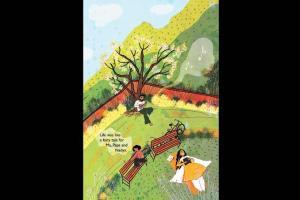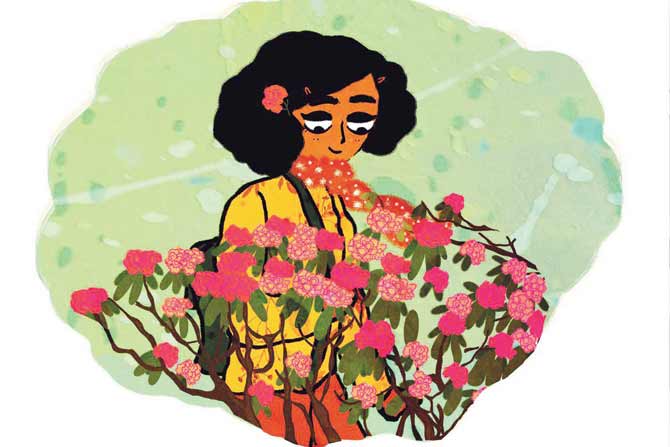A new graphic novel uses powerful visual storytelling to familiarise children with the challenge of divorce, while serving as guide for adults

.
Where do we hide pain? Author and illustrator Debasmita Dasgupta buries it under ochre-toned landscapes, rhododendrons and the mountains. In Nadya (Scholastic India), her first written work that released this month, pain unfolds like a lucid narrative to the reader as opposed to massive shock. Through a family of three — a 13-year-old Nadya and her parents — Dasgupta introduces divorce as a process and not an incident that in popular culture and society at large is still taboo.
Nadya is a well-adjusted child. Together with her parents, she goes hiking in the mountains and takes bicycle trips. Eventually, the happy days are gone and the sounds of parents fighting take over. And one day, her father leaves, promising her that he will be back soon. She knows it's a lie, and equates divorce with permanent damage.
ADVERTISEMENT

Dasgupta had to tap into her memories of friends witnessing or undergoing the process to develop a personal connection with Nadya. "I was about seven years old and my best friend's parents were going through a separation. I didn't know what exactly happened then but she became quiet and eventually left school. I kept feeling that maybe as a friend I could've done something. Many years later, I met a woman who was going through divorce and had an eight-year-old daughter. At that point I started thinking through the eyes of a child," the Singapore-based artist tells us, adding that before she started, she didn't feel confident enough to write the book. But she embarked on the project a year ago and completed it within seven months.

Dasgupta, 39, also explains the graphic novel as a visual process. She needed the images to speak for themselves, and they do. For instance, the book starts off with Nadya scrunched up in the corner of her bed and staring at the window pane — knowing that there's a fight about to erupt — but cuts to flashbacks. Talking about this almost cinematic approach, Dasgupta says, "I'm heavily influenced by cinema but I didn't want to render the flashback scenes black and white or in a muted tone." And although the colours dim for a brief while, as the protagonist deals with her agony by running away from her mum and venturing out into the woods, the writer spins the narrative into one of hope.

Debasmita Dasgupta
Nadya knows that her life might never be the same again but also realises that it being any different is not wrong. A story on separation is for everyone, and children need to be part of this dialogue. In a world fuelled by stigma, Dasgupta wants her story to spark thinking. She says, "I have loved graphic novels because they have been conversation starters, and I would like Nadya to start one, too — it doesn't need to be a conversation with another person, but one with yourself."
Catch up on all the latest Mumbai news, crime news, current affairs, and also a complete guide on Mumbai from food to things to do and events across the city here. Also download the new mid-day Android and iOS apps to get latest updates
 Subscribe today by clicking the link and stay updated with the latest news!" Click here!
Subscribe today by clicking the link and stay updated with the latest news!" Click here!







